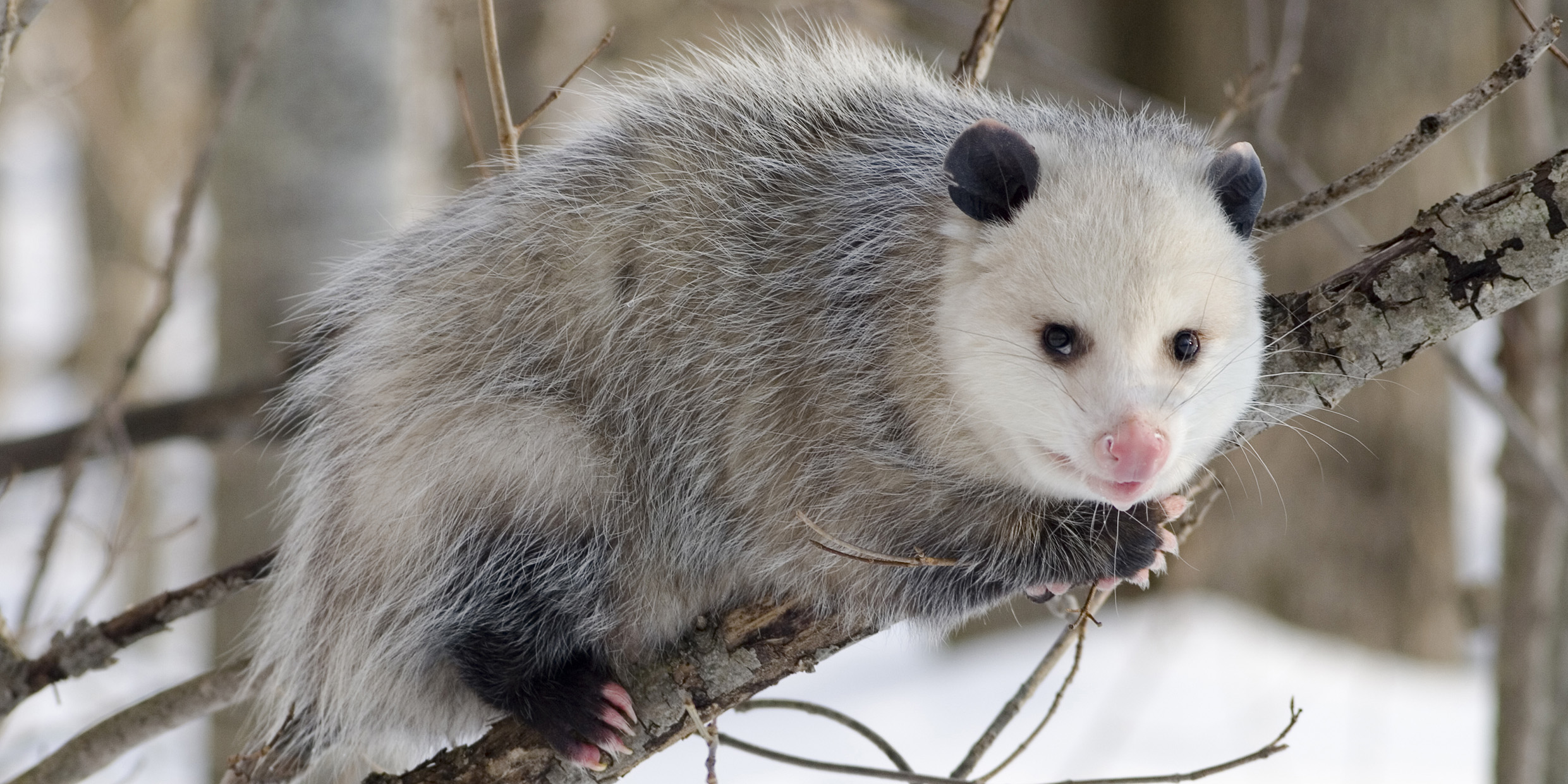Originally published 20 June 1983.
The possum is not an attractive domestic scavenger, having the scruffy, unkempt look of a Bowery bum and the reputation, probably deserved, of being stupid. Certainly the possum lacks the cuddlesome charm of its partner in backyard crime, the raccoon.
But it would be hard to fault the possum for its resourcefulness. The rat-tailed marsupial has sometimes been called a “living fossil.” It has survived with little change for tens of millions of years; the first possums shared the earth with dinosaurs.
New Englanders, however, are new to possums, first encountering them regularly about 17 years ago, according to Harriet Rossen of the Blue Hills Trailside Museum. The animal was apparently nudged into our region as shopping malls and suburban development reduced its more southerly habitats.
A rare surviving marsupial
Possums, like other marsupials, are born in a much more immature state than other mammals and must spend a nursery residence in the mother’s pouch. Marsupials have not done well in competition with the more intelligent and adaptable placentals. Generally, marsupials have flourished only in geographical isolation. The wombats, bandicoots, koalas, and kangaroos of Australia are obvious examples.
Except for the possum. The possum has gone from success to success, often in competition with placentals. The story of this little South American native’s long trek to New England is a tale of staying power and pluck. The story begins millions of years ago when the Panama Isthmus began to rise from the floor of the sea.
When the first mammals appeared on Earth, the continents were united in a single land mass geologists call Pangaea (“all-earth”). Not long after the mammals made their debut, Pangaea broke apart and the continents began their drift to their present positions. For 100 million years South America was on its own, unconnected to any other land mass. The isolated continent evolved distinctive communities of plants and animals. The mammals of South America, like the mammals of Australia today, included many marsupials.
A bridge between continents
Beginning about 20 million years ago, the part of the Earth’s crust between North and South America was caught in a geological squeeze. The sea floor crumpled upward and volcanoes poured lavas onto the surface. By three million years ago a solid link had been established between the two continents.
Traffic across the new land bridge moved both ways. Northern invaders, including wolves, foxes, bears, llamas, and deer, were spectacularly successful in the south. Native marsupials fared poorly in competition with placentals from the north. All but two species of southern marsupials were wiped out.
A changing physical environment in South America may have aided the northern invaders. The geological squeeze that crumpled up the Panama isthmus affected the entire western margin of the Americas, creating a mountain wall from Alaska to Tierra del Fuego. The towering range acted as a barrier to warm, moisture-laden winds from the Pacific. Habitats in southern South America changed from grasslands and woodlands to drier forests and deserts. The northern immigrants were better able to insinuate themselves into the new ecological niches than were the southern natives.
Meanwhile, South American animals made their way north. Armadillos blazed the trail along with porcupines and capybaras. In the next wave of immigrants were the possums and ground sloths. Later arrivals included marmosets and monkeys, tree sloths and anteaters.
Migrants from south faced a surprise
But the southerners that trekked across Panama faced troubles in the north. As they arrived in North America, the continent fell into the icy grip of massive glaciation.
Southern species that moved north across the land bridge were unprepared for the rigors of an ice age. Nor were they prepared for an even deadlier threat that came with the ice. The new threat challenged northerners and southerners alike.
As water piled up on the northern continents in the form of ice, sea levels fell. It became possible to walk from Asia to Alaska across the dried-up floor of the Bering Strait. Across this dry passage came the first human migrants to the Americas, armed with fire and flint-tipped spears. Species of animals on both continents were hunted to extinction.
Of the southern mammals that moved into North America, only the armadillo and the possum survive today. And only the possum preserves the marsupial line in the north.
Mountains rose and fell. Ocean currents were deflected. Continents were piled with ice. Throughout the geological turmoil the plucky possum prospered. It competed successfully with northern placentals. It adapted to changing environments and climates. It outsmarted and outlasted human predators. It continues to expand its range and has brought at last to New Englanders an exotic glimpse of other continents and other geological eras. The possum, no doubt, will outlast the automobile as well.



